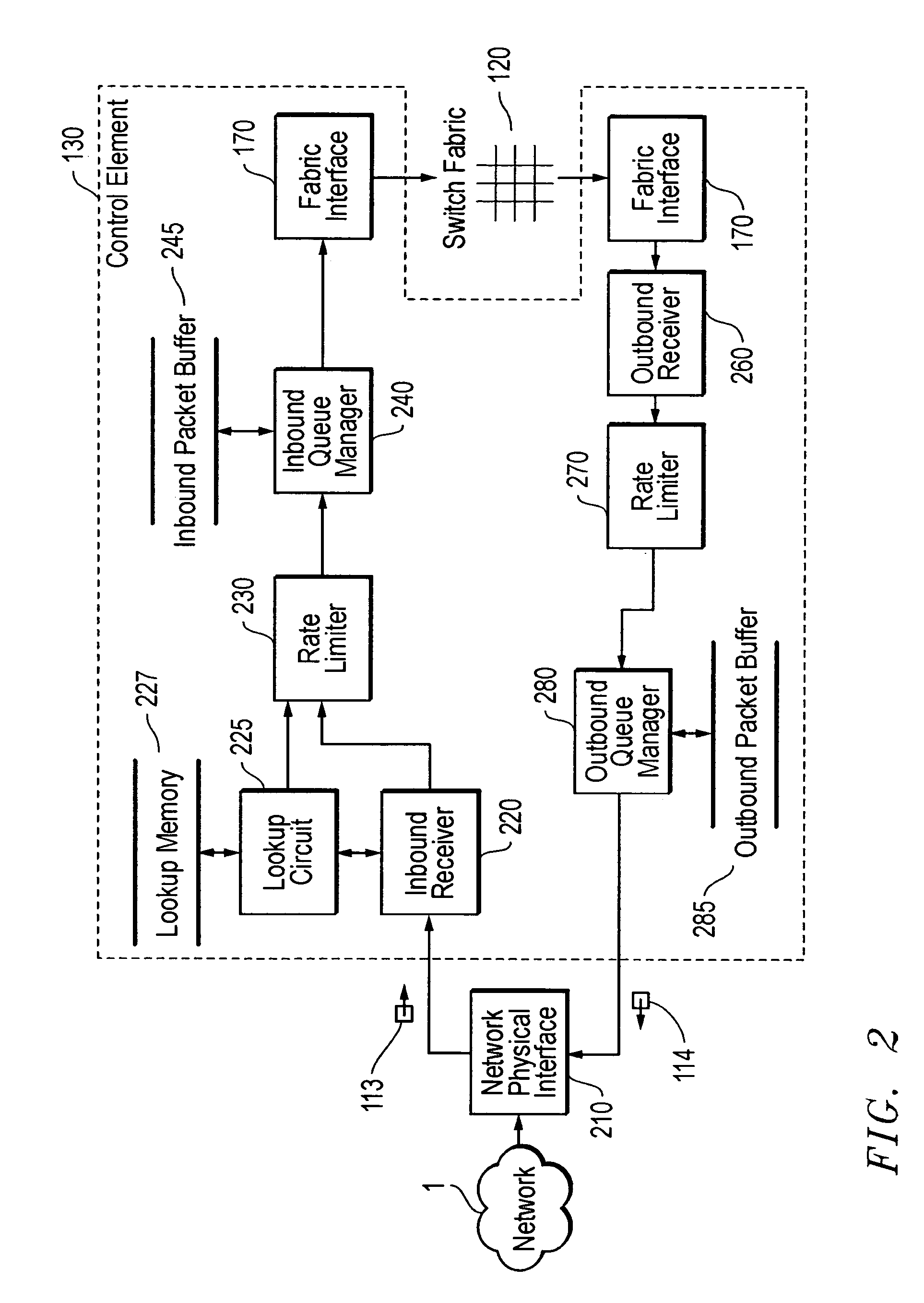Architecture for high speed class of service enabled linecard
a linecard and high-speed technology, applied in the field of linecards, can solve the problems of only limited success in providing the necessary increase in throughput speed, inability to quickly provide a range of services based on packet priority, and high packet latency, and achieve low latency, low cost and minimal packet delay.
- Summary
- Abstract
- Description
- Claims
- Application Information
AI Technical Summary
Benefits of technology
Problems solved by technology
Method used
Image
Examples
embodiment
REPRESENTATIVE EMBODIMENT
[0114]In one embodiment of the present invention, shown in FIG. 7, the layer 3 (L3) switching function of control element 130 is distributed over three ASICs which perform the various functions described above, namely the RX, MCC, and TX ASICs.
[0115]The RX ASIC is used for four main functions: packet buffering control while the lookup is being performed (inbound receiver 220); IP routing lookups and IP checksum verification (lookup circuit 225); rate limiting, including CAR (rate limiter 230); and IP and tag level modifications.
[0116]The MCC ASIC function as the inbound queue manager 240 (also referred to as the “memory controller”). It is used to buffer packets waiting to go to the fabric.
[0117]The TX ASIC include outbound receiver 260, rate limiter 270, and outbound queue manager 280. The TX ASIC also adds the output encapsulation bytes and provides IP multicast features. The TX ASIC uses the queue management portion of the MCC ASIC to provide outbound que...
PUM
 Login to View More
Login to View More Abstract
Description
Claims
Application Information
 Login to View More
Login to View More - R&D
- Intellectual Property
- Life Sciences
- Materials
- Tech Scout
- Unparalleled Data Quality
- Higher Quality Content
- 60% Fewer Hallucinations
Browse by: Latest US Patents, China's latest patents, Technical Efficacy Thesaurus, Application Domain, Technology Topic, Popular Technical Reports.
© 2025 PatSnap. All rights reserved.Legal|Privacy policy|Modern Slavery Act Transparency Statement|Sitemap|About US| Contact US: help@patsnap.com



